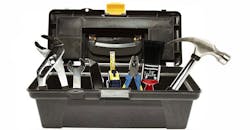Just when is a repair done? Some experts say to perform a full PM so the equipment has a fresh start. Others say to perform baseline testing, so you can use the next set of test data to spot equipment degradation.
The problem with either approach is there’s only so much time. So, are these people wrong? The real answer, in either case, is it depends. Any time you invest in one repair is less time you have for other repairs. Here are some factors to consider:
- Equipment criticality. You have a list of critical equipment. Anything on this list should probably get baseline testing and at least a partial PM.
- Equipment type. Baseline testing on a feeder cable after replacement is very cost-effective and worth the time. Conducting a battery of tests on a motor, probably not.
- Difficulty/cost of access/repair. Consider these factors versus failure likelihood. If 80% of the repair cost involves getting at the part or system being replaced, then a full PM is probably a good idea before putting everything back together.
- Cost of one downtime incident. The lower this cost, the less time should be allocated to doing more than the repair itself.
About the Author

Mark Lamendola
Mark is an expert in maintenance management, having racked up an impressive track record during his time working in the field. He also has extensive knowledge of, and practical expertise with, the National Electrical Code (NEC). Through his consulting business, he provides articles and training materials on electrical topics, specializing in making difficult subjects easy to understand and focusing on the practical aspects of electrical work.
Prior to starting his own business, Mark served as the Technical Editor on EC&M for six years, worked three years in nuclear maintenance, six years as a contract project engineer/project manager, three years as a systems engineer, and three years in plant maintenance management.
Mark earned an AAS degree from Rock Valley College, a BSEET from Columbia Pacific University, and an MBA from Lake Erie College. He’s also completed several related certifications over the years and even was formerly licensed as a Master Electrician. He is a Senior Member of the IEEE and past Chairman of the Kansas City Chapters of both the IEEE and the IEEE Computer Society. Mark also served as the program director for, a board member of, and webmaster of, the Midwest Chapter of the 7x24 Exchange. He has also held memberships with the following organizations: NETA, NFPA, International Association of Webmasters, and Institute of Certified Professional Managers.
